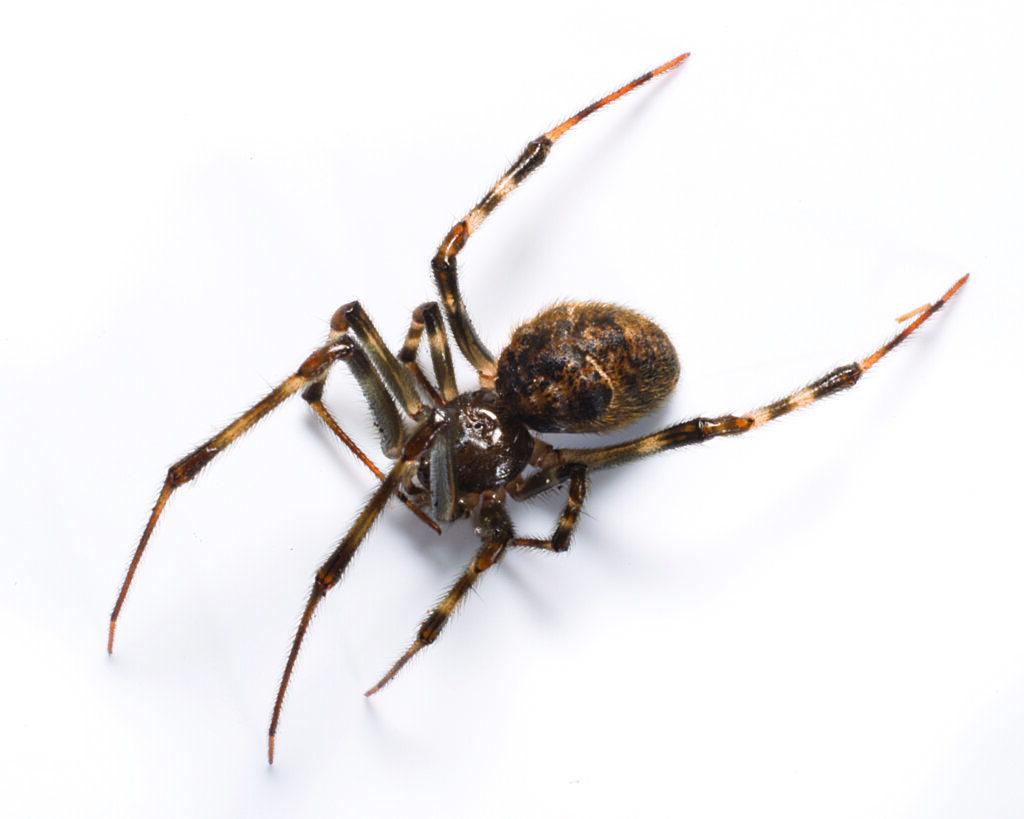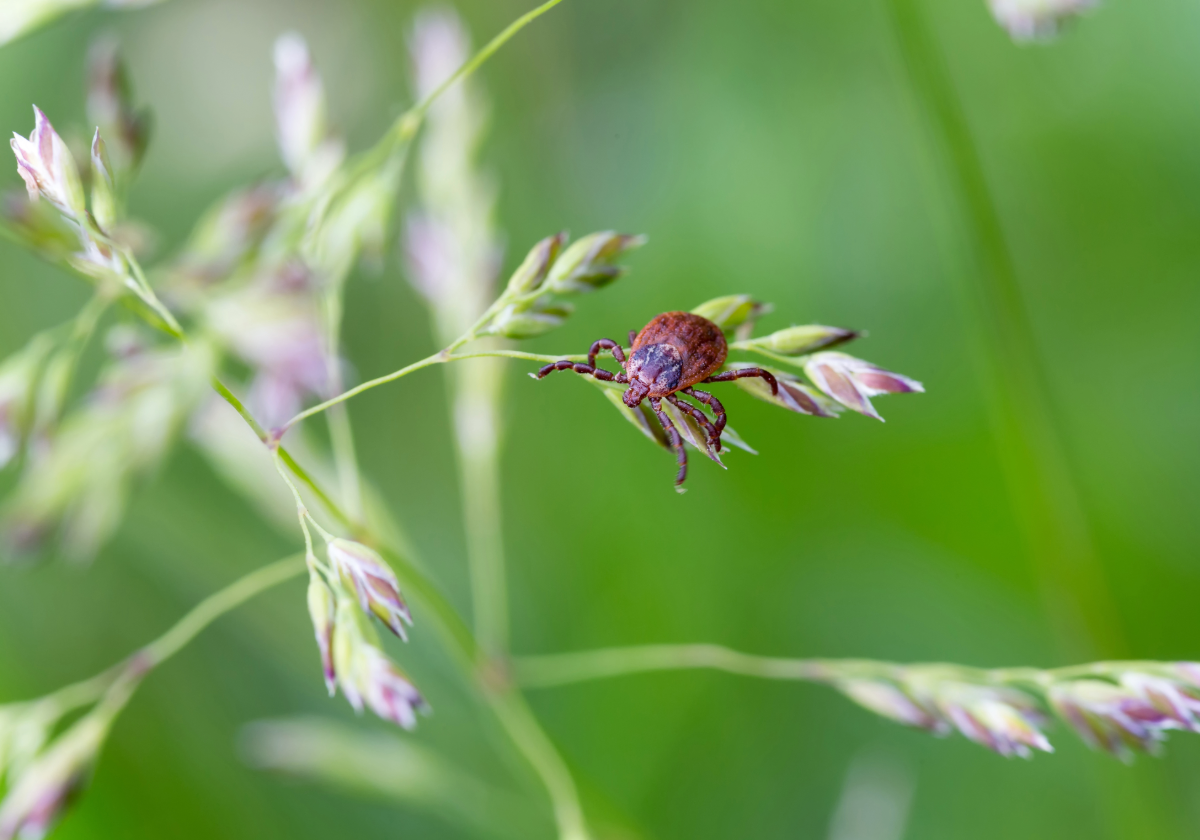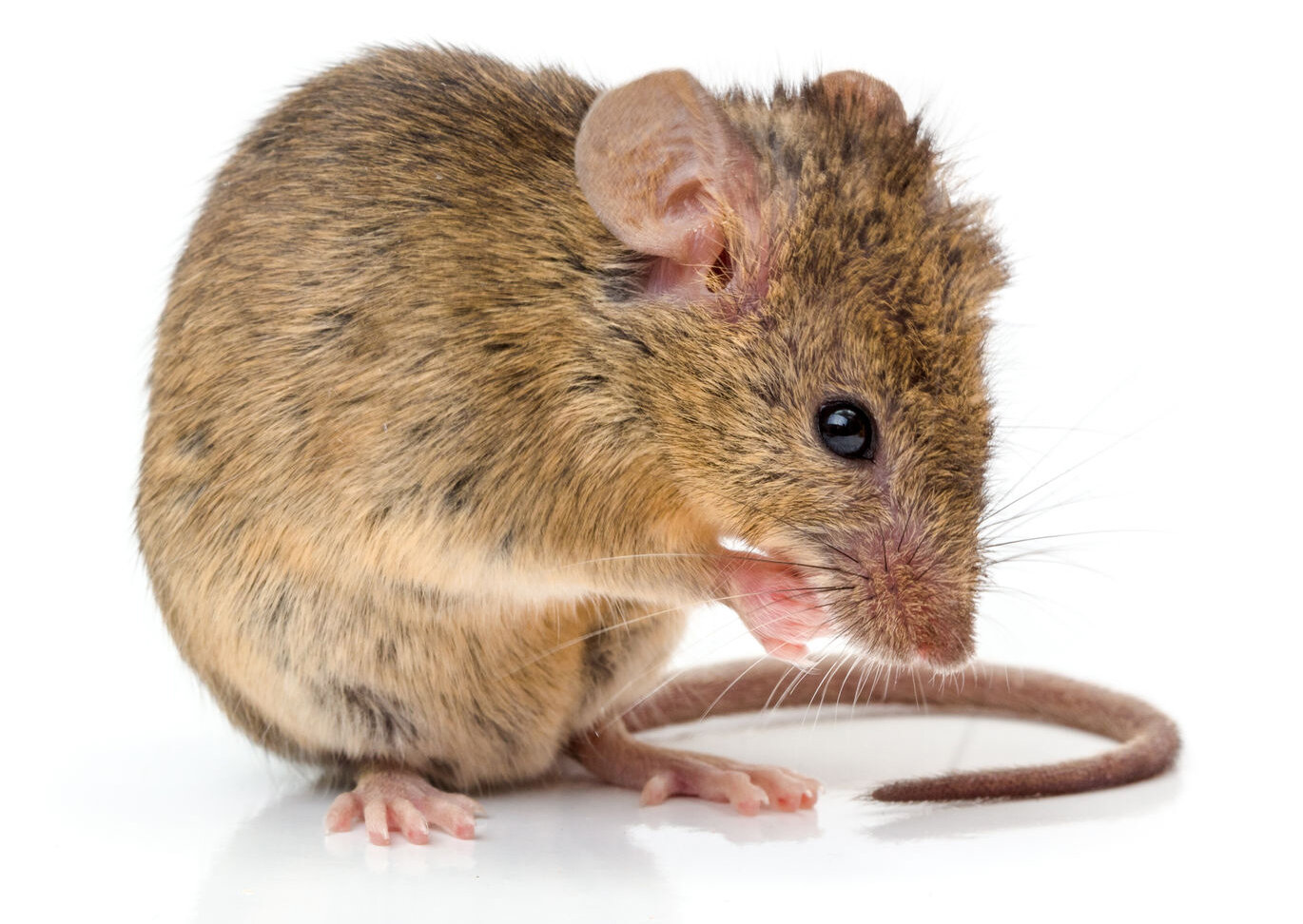
Spiders are one of the creepiest pests you can deal with. Just thinking about them is enough to make your skin crawl. This leads to a lot of curiosity about them and what to do if you’re dealing with an infestation. Our Entomologist, Dr. El Damir, is here to answer commonly searched spider questions on the internet.
How Are Spider Webs Made?
Spiders make webs by producing silk from their bodies. They have special spinnerets at the back of their abdomen that release the silk in a liquid form. The spider starts by attaching a thread to something sturdy, like a branch or a wall. Then it moves away and leaves more threads behind, creating a framework for the web. Next, the spider spins sticky threads in a spiral pattern from the outside. These sticky threads help catch prey. Some spiders may also add extra decorations to their webs.
How Do Spider Eyes Work?
Spiders have two main types of eyes: big ones and smaller ones. The big eyes give them a clear view of what’s in front of them, while the smaller eyes give them a wider view of their surroundings.
Each spider eye has a lens, like a little window, that lets light in. Inside, there are special cells that can detect light called photoreceptors. Some cells are good at seeing in dim light, while others help the spider see colors and details. Having multiple eyes helps spiders see things from different angles. It’s like having several cameras taking pictures all at once. This helps them spot prey, predators, and any danger that might be nearby. Spiders can move their eyes a little bit to look around. They can’t move their eyes as much as we can, but they can move their whole body or head to change their view. Spiders use their eyes to hunt for food. Some spiders, like jumping spiders, are really good at seeing and catching their prey. They can estimate how far away something is and time their attacks just right.
Which Spider Is The Most Dangerous?
Among spiders, several species have the potential to be dangerous to humans, but it is important to note that severe spider bites are relatively rare. Some of the most commonly dangerous spiders include:
Brazilian Wandering Spider (Phoneutria spp.): These spiders in South America are known for their potent neurotoxic venom. Their bites can cause severe pain, inflammation, and in rare cases, systemic effects such as increased blood pressure and priapism.
Black Widow (Latrodectus spp.): Black widows are found worldwide, and their bites can result in intense pain, muscle cramps, nausea, and other systemic symptoms. Female black widows are known for their distinctive red hourglass-shaped marking on the abdomen.
Brown Recluse (Loxosceles spp.): Brown recluse spiders are primarily found in the United States. Their bites can lead to necrotic skin lesions, which may take a long time to heal. Systemic symptoms are uncommon but can occur in some cases.
Sydney Funnel-Web Spider (Atrax and Hadronyche spp.): These spiders are native to Australia and are considered highly venomous. Their bites can cause severe pain, muscle spasms, sweating, and sometimes life-threatening complications.
Are All Spiders Poisonous?
No. In principle, all spiders possess venom glands and can be considered venomous. However, not all spiders are capable of causing harm to humans or other animals with their venom. The venom of many spider species is not potent enough or not designed to affect larger animals like humans. It’s important to remember that the majority of spider species are harmless to humans and play a beneficial role in ecosystems by controlling insect populations.
Is A Spider An Insect?
No, a spider is not an insect. While both spiders and insects are arthropods, they belong to different taxonomic groups. Spiders are part of the class Arachnida, which includes spiders, scorpions, ticks, and mites. Insects, on the other hand, belong to the class Insecta and include creatures like ants, bees, butterflies, and beetles.
There are several key differences between spiders and insects. Spiders have two main body parts (cephalothorax and abdomen) and eight legs, while insects typically have three main body parts (head, thorax, and abdomen) and six legs. Spiders also lack wings, which are present in many insects. Additionally, spiders have specialized mouthparts called chelicerae used for biting and injecting venom, whereas insects have various types of mouthparts like mandibles or proboscis for chewing or sucking.
Can A Spider Swim?
While most spiders are not adapted for swimming and are generally associated with terrestrial habitats, some species of spiders are capable of swimming to some extent. These spiders have adaptations that enable them to move in water or traverse across its surface. Certain water-dwelling spiders, such as the fishing spiders (family Pisauridae) and the raft spiders (genus Dolomedes), are known to be adept swimmers. They have specialized leg structures that allow them to move efficiently through water. These spiders use their legs to generate propulsion and navigate on the water’s surface. They can even dive and remain submerged for a period of time.
Which Spider Can Eat A Bird?
While it is rare for spiders to prey on birds, there are a few species of spiders that are known to occasionally capture and consume birds. One example is the South American Goliath birdeater spider (Theraphosa blondi), which is considered the largest spider in the world by mass and size. While its primary diet consists of insects, small mammals, and reptiles, there have been reports of Goliath birdeaters capturing and feeding on small birds. Another example is the Australian redback spider (Latrodectus hasselti), a member of the widow spider family. Redback spiders are known to build their webs in low shrubs and occasionally capture small birds that become entangled in their webs.
How Long Do Spiders Live?
The lifespan of spiders can vary significantly depending on the species. Some spiders have relatively short lifespans, living for only a few months, while others can live for several years. In general, smaller spider species tend to have shorter lifespans compared to larger ones. The following are some examples:
House spiders (Tegenaria domestica): Typically live for about 1 to 2 years.
Garden spiders (Araneus diadematus): Live for approximately 1 to 2 years.
Black widow spiders (Latrodectus spp.): Females can live for 1 to 3 years, while males have much shorter lifespans of a few months.
Wolf spiders (Lycosidae family): Lifespan varies depending on the species but generally ranges from 1 to 3 years.
Tarantulas (Theraphosidae family): Lifespan can vary greatly depending on the species. Some tarantulas can live for 10 to 20 years or more, with some documented cases of certain species living up to 30 years or longer.
What Is The Biggest Spider In The World?
The biggest spider in the world by leg span is the Goliath birdeater (Theraphosa blondi), which is found in the rainforests of South America, particularly in the Amazon basin. The leg span of the Goliath birdeater can reach up to 30 centimeters (12 inches), and it can weigh over 170 grams (6 ounces). While they are large and imposing, it’s important to note that Goliath birdeaters are generally docile and not considered a significant threat to humans.
Can Spiders Jump?
Some spiders can jump, while others cannot. Spiders that can jump have a special ability to leap from one place to another. They use this jumping ability to catch their prey or to escape from danger. Examples of jumping spiders include the wolf spider, jumping spider, and certain types of tarantulas. These spiders are good at hunting because they can quickly jump toward their prey.
If You’re Dealing With Spiders…
Adam’s expertly trained technicians are ready to help you enjoy your home to fullest. You can find out more information or get a quote by visiting our Spider Page




